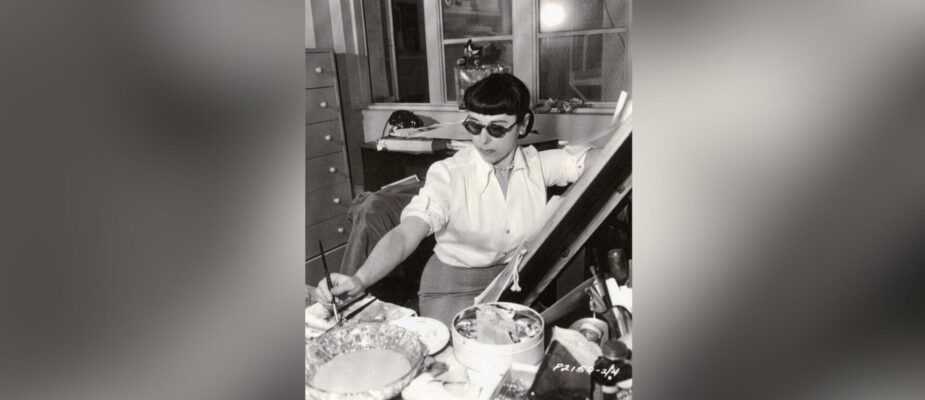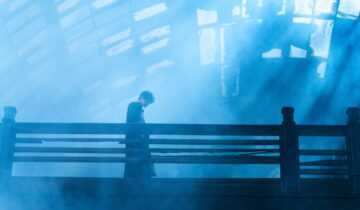By Kristen Pignuolo, Curatorial Assistant
With the exhibition Edith Head: Hollywood’s Costume Designer opening this Saturday, June 22, OKCMOA visitors will be able to see dozens of costumes from costume designer Edith Head’s (1897-1981) long career. She designed costumes for almost sixty years (from the early 1920s to the early 1980s), working her way up from the position of sketch artist to chief costume designer at Paramount Pictures in 1938 (later moving to Universal Studios in 1967). With over 400 films under her belt, Head worked on some of Hollywood’s most acclaimed films, such as Rear Window (1954), Sunset Boulevard (1950), Vertigo (1958), and The Heiress (1949). Creating costumes for just one film was an undertaking that took months of effort, work that Head did not do alone. As chief costume designer, she oversaw a massive department that included seamstresses, sketch artists, beaders, and more.
The design process first started with Head reading the film script and creating a wardrobe plot, which lists the film’s characters, descriptions of their costumes, and the sequence in which they would be used. If the script was historical, researchers at Paramount’s library would provide the costume department with images of clothing and relevant information from the period. However, some directors called for more rigorous historical research. For the 1949 film The Heiress, set in late nineteenth-century New York City, director William Wyler was so committed to historical accuracy that he sent Head to New York to study period-appropriate clothing and textiles.
Once any necessary research was done, Head and the department sketch artists would create sketches of the costumes. At this point, fabric would be selected from the studio’s extensive fabric warehouse or ordered. Head would also collaborate with art directors and camera operators to make sure the colors and materials intended for the film’s costumes would work with its set design and lighting. Finalized sketches, often with fabric swatches attached (example to the left), would then make the rounds to the film’s producer, director, and star for approval. Once sketches were approved, costume construction would begin. Head oversaw costume construction and typically had three fittings with an actor and, if the budget allowed, a final camera test before film production. Of course, certain costumes took far more time to create than others. For the film The Perils of Pauline, actress Betty Hutton wore a completely beaded two-piece gown for the musical number at the end of the movie. It took beaders approximately six months to complete the costume.
The costume department’s work didn’t always stop once production began. For the biblical epic The Ten Commandments (1956), the costuming unit, led by five designers including Head, arrived in Egypt at the beginning of filming with costumes for 3,000 extras. After months of collaborating with historical researchers, drafting thousands of sketches and creating costumes, they discovered that the film’s director, Cecil B. DeMille, wanted them to costume 15,000 extras instead. Despite this seemingly impossible hurdle with film production starting, the costume department sourced or created the necessary costumes, and The Ten Commandments was nominated for an Academy Award for Best Costume Design, Color.
Learn more about the inner workings of a Hollywood costume department and how Edith Head created a lasting legacy in the field of costume design by visiting Edith Head: Hollywood’s Costume Designer, organized by OKCMOA and presented by The Ann Lacy Foundation.
Image Credits
Edith Head at work. Courtesy of The Paramount Pictures Archive
Wisconsin Center for Film and Theater Research









